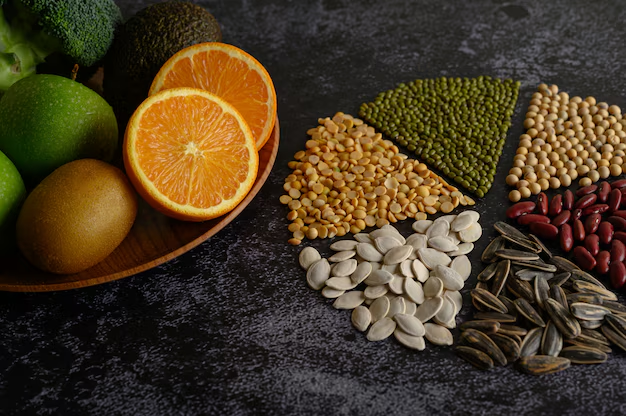Fiber is a central piece of a healthy diet schedule, yet it’s by and large expected ignored for various enhancements like protein or fats. This sturdy enhancement offers clinical benefits, from additional handling and supporting weight control to lessening the bet of industrious contaminations like coronary disease and diabetes. Notwithstanding its importance, numerous people disregard the recommended everyday affirmation of fiber. Understanding the occupation of fiber and how to coordinate it into your diet can provoke colossal overhauls by and large and thrive.Why You Should Include Fiber in Your Diet
What Is Dietary Fiber?
Dietary fiber suggests the unpalatable bits of plant-based food assortments that pass through the stomach-related structure to some degree immaculate. As opposed to sugars, fats, or proteins, fiber isn’t isolated and is consumed by the body for energy. Considering everything, it goes through the stomach, minimal gastrointestinal framework, and colon, which is essential in remaining mindful of stomach-related flourishing and supporting other genuine cycles.
Fibre comes in two main types: dissolvable and insoluble. Dissolvable fiber disintegrates in water to move toward a gel-like substance that regulates glucose and lowers cholesterol levels. Food sources like oats, beans, and apples contain dissolvable fiber. Insoluble fiber, then again, adds mass to stool and upsets the check. Whole grains, vegetables, and nuts are mind-blowing sources of insoluble fiber.
The Importance of Fiber for Digestive Health
One of the most striking benefits of fiber is its constructive outcome on digestion. Fibre adds mass to stool, which supports its smooth section through the digestive tract, diminishing the bet of stoppage. Insoluble fiber is particularly convincing in propelling standard strong releases and staying aware of, by and large, gut health.
Fibre, in like manner, functions as a prebiotic, meaning it deals with the profitable minuscule organic entities in your gut. These organisms play an urgent part in handling, supplement maintenance, and safe capacity. A fiber-rich diet maintains a healthy digestion microbiome, is associated with better perspective, overhauls obstruction, and lessens bodily disturbance.
For individuals encountering digestive-related wrecks like irritable bowel syndrome (IBS) or diverticulosis, a high-fiber diet can help with managing secondary effects. However, it’s essential to gradually increase fiber intake and hydrate to avoid burdens like expanding or gas.
Fiber and Weight The executives
Fibre is a significant partner for those hoping to oversee or get thinner. Food sources rich in fiber are normally seriously filling, which helps control hunger and decrease large calorie admission. Solvent fiber, specifically, eases back processing and advances a sensation of totality, forestalling gorging.
High-fiber food varieties are also quite often lower in calories and more nutritious than handled, low-fiber choices. For instance, serving a new natural product or a bowl of oats provides fiber fundamental nutrients and minerals. By remembering to use more fiber for your dinners, you can normally lessen the utilization of unhealthy, nutritionally unfortunate food sources.
Studies have shown that individuals who consume more fiber are bound to maintain a sound weight after some time. Fiber-rich weight control plans balance glucose levels and decrease the desire for sweet or greasy food sources. By making fiber a diet foundation, you can accomplish sustainable weight management without feeling denied.
The Role of Fiber in Heart Health
Coronary illness is one of the main causes of death worldwide. However, dietary fiber can play a huge role in decreasing risk factors. Solvent fiber, found in foods like beans, oats, and flaxseeds, helps lower LDL cholesterol levels (frequently alluded to as “terrible cholesterol”). It does this by restricting cholesterol particles in the stomach-related framework and eliminating them from the body before they can enter the circulatory system.
Fibre likewise directs pulse by working on blood vessel health and lessening irritation. Also, high-fiber diets from food are related to better weight control and lower fatty substance levels, the two of which are basic for heart health.
Coordinating fiber-rich food assortments into your ordinary banquets is a direct yet fruitful strategy for defending your cardiovascular system. A heart-solid eating routine rich in whole grains, normal items, and vegetables can, in general, lessen the risk of coronary sickness and related conditions.
Managing Blood Sugar Levels with Fiber
For people with diabetes or those in danger of developing the condition, fiber is an incredible asset for managing sugar levels. Dissolvable fiber eases back the assimilation of sugar in the circulatory system, forestalling abrupt spikes and crashes in blood glucose levels. This makes high-fiber food sources a magnificent decision for maintaining consistent energy throughout the day.
Research has demonstrated that eating less fiber can further develop insulin awareness, making it more straightforward for the body to manage glucose. Whole grains, vegetables, and non-dull vegetables are especially helpful for diabetics, as they provide a consistent supply of energy without causing sugar fluctuations.
For those without diabetes, integrating fiber into your diet can help diminish the risk of fostering the condition. High-fiber food sources advance weight control and lessen the utilization of sweet, processed food sources, both of which are significant supporters of diabetes.
Foods High in Fiber

Incorporating more fiber into your eating regimen needn’t bother with to be tangled. Various tasty and adaptable food sources are normally rich in fiber. The following are a couple of top sources:
Fruits and Vegetables:
Apples, pears, oranges, and bananas
Leafy greens, broccoli, and carrots
Avocados, which are furthermore affluent in strong fats
Entire Grains:
Brown rice, quinoa, grain, and oats
Entire grain bread, pasta, and cereals
Vegetables:
Lentils, chickpeas, dark beans, and kidney beans
Nuts and Seeds:
Almonds, chia seeds, flaxseeds, and sunflower seeds
Other Fiber-Rich Food sources:
Yams, squash, and artichokes
Popcorn (air-popped and unsalted)
Incorporating different food assortments into your blowouts promises a mix of dissolvable and insoluble fiber, which can help with their health benefits.
Tips for Increasing Fiber Intake
Accepting that your continuous eating regimen is low in fiber, it’s basic to increase your intake bit by bit to avoid stomach-related discomfort. Start by displacing refined grains with whole grains, for instance, exchanging white rice for hearty-hued rice or white bread for whole-grain bread. Add a serving of natural products or vegetables to every feast, and nibble on high-fiber choices like nuts, seeds, or popcorn.
Hydration is key when increasing fiber intake. Fibre retains water as it travels through the stomach-related framework, so drinking a lot of liquids guarantees that it passes without a hitch and forestalls stoppage. Finally, go for the gold by integrating fiber-rich food sources into every dinner instead of eating them inconsistently.
Recommended Daily Fiber Intake
The recommended daily intake of fiber fluctuates by age and orientation. According to the Foundation of Medication, ladies should consume nothing of fiber daily, while men should target 38 grams. After age 50, these ideas decline, possibly to 21 grams for women and 30 grams for men.
Regardless of these rules, the vast majority consume just about 50% of the suggested amount of fiber. Tending to this hole can fundamentally improve general health and reduce the risk of chronic diseases.
The Long-Term Benefits of a High-Fiber Diet
An incredibly fiber-rich diet offers more than prompt benefits like superior processing or better craving control. Over the long haul, it can diminish the risk of several chronic conditions, including coronary illness, type 2 diabetes, and certain malignant growths, like colorectal disease. Fibre’s mitigating and cell reinforcement properties add to these defensive impacts, supporting Long-Term health and life span.
Fibre likewise promotes healthy maturing by maintaining gut health, which is firmly connected to susceptibility and mental capability. Fiber also manages weight by expanding sensations of fullness, which can prevent overeating. By sustaining helpful stomach microbes, a fiber-rich diet diminishes the risk of old-enough-related sicknesses and improves general imperativeness.
A high-fiber diet offers deep-rooted benefits that stretch out past physical health. With a sufficient admission of 25-30 grams of fiber every day, people can encounter further developed energy levels and better mental well-being because of a decent gut-brain connection. Fiber likewise helps battle irritation, which is connected to different age-related illnesses, including joint inflammation and neurodegenerative problems. Keeping up with reliable fiber utilization empowers manageable dietary patterns, decreases the requirement for supplements, and gives different supplements fundamental for a flourishing body. After some time, these advantages add to improved personal satisfaction and life span, highlighting the significance of focusing on fiber in regular meals.
Conclusion
Remembering more fiber in your diet is one of the least complex and most significant changes you can make for your health. From further developing processing and supporting weight the board to safeguarding against constant sicknesses, fiber is a genuine nutritional powerhouse to be reckoned with. By consolidating various natural products, vegetables, entire grains, vegetables, and nuts into your feasts, you can meet your daily fiber needs and partake in its many advantages without much of a stretch.
Focusing on fiber in your diet doesn’t need radical changes. Begin with small, steady advances, and over the long haul, you’ll see enhancements in your energy, prosperity, and overall health. Fibre isn’t simply an addition to your dinners—it’s a fundamental part of a reasonable, feeding diet that upholds a better and more joyful life.


